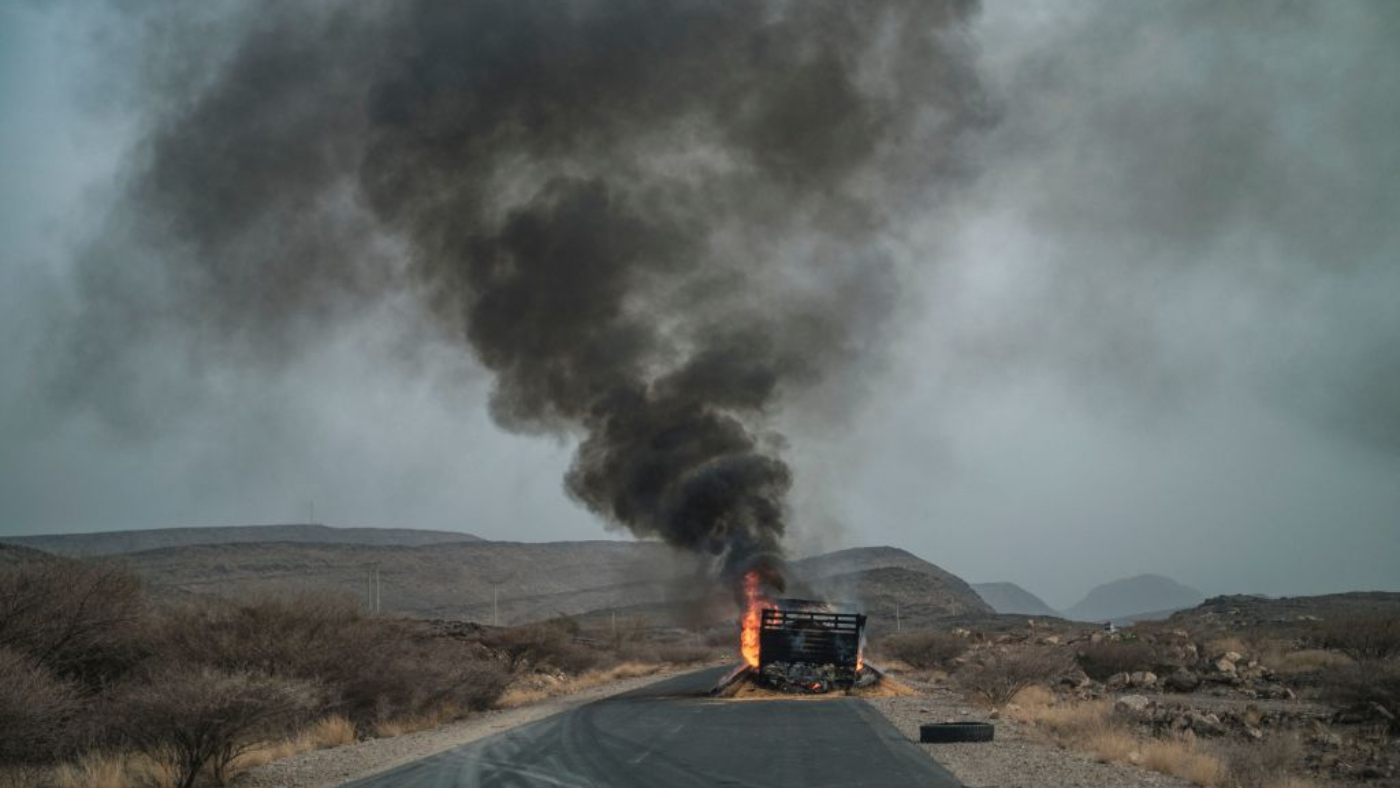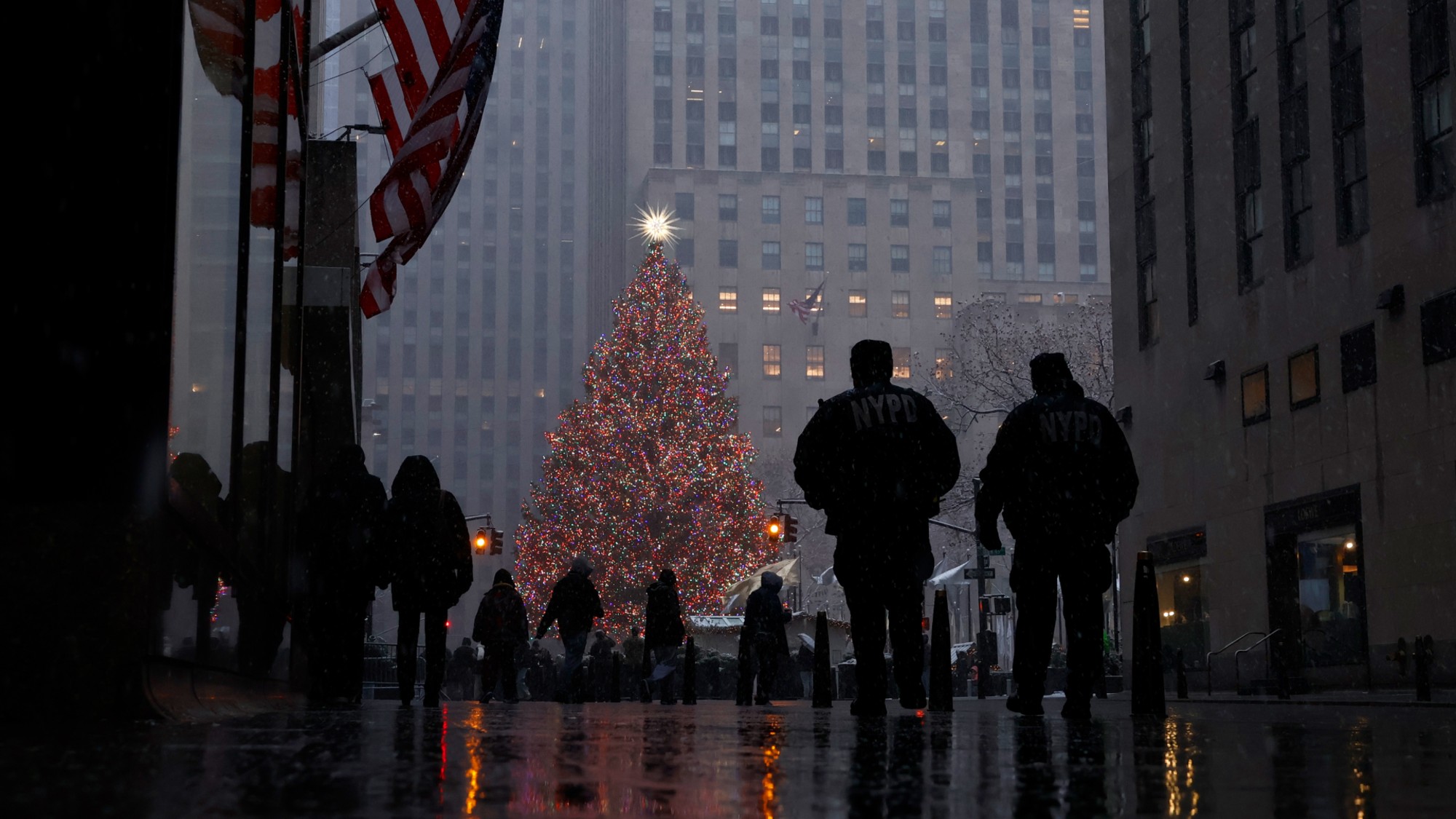The surprise Tigray truce
Hostilities are to cease in Ethiopia’s two-year civil war as Pretoria talks bring ‘dramatic breakthrough’

There are hopes that Ethiopia’s brutal two-year civil war is coming to an end after the government and Tigrayan forces agreed to stop the fighting.
Just over a week after formal peace talks began in the South African capital of Pretoria, mediated by the African Union, delegates from the Tigray People’s Liberation Front (TPLF) and the Ethiopian government have signed an agreement on a “permanent cessation of hostilities”.
It is a “dramatic diplomatic breakthrough” in a two-year war that has “killed thousands, displaced millions and left hundreds of thousands facing famine”, said Reuters.
The Week
Escape your echo chamber. Get the facts behind the news, plus analysis from multiple perspectives.

Sign up for The Week's Free Newsletters
From our morning news briefing to a weekly Good News Newsletter, get the best of The Week delivered directly to your inbox.
From our morning news briefing to a weekly Good News Newsletter, get the best of The Week delivered directly to your inbox.
The news agency added that a peace agreement “had not been expected so soon”. Media representatives had been invited to what was described as a briefing by the head of the AU mediation team, Olusegun Obasanjo, a former president of Nigeria. “It was only when the event began, about three hours behind schedule, that it became clear a truce was about to be signed.”
Obasanjo warned that the signing of the deal was just the beginning of the peace process. “Implementation of the peace agreement signed today is critical for its success,” he said.
The UN Secretary General António Guterres described the agreement as “a welcome first step, which we hope can start to bring some solace to the millions of Ethiopian civilians that have really suffered during this conflict”.
The deal is certainly a major breakthrough, but it will “be received with some degree of caution”, said the BBC. This is not the first ceasefire that has been agreed during the conflict. A previous truce agreed in March was breached in August – ”just months after both sides committed to it”, said the broadcaster.
A free daily email with the biggest news stories of the day – and the best features from TheWeek.com
How did things get so bad?
Until two years ago, Ethiopia was seen as one of Africa’s great recent success stories. From the mid-1990s, the country started moving towards democracy, and from a state of dire poverty it became a model for rapid, effective development. In 2019, its prime minister, Abiy Ahmed, won the Nobel Peace Prize for ending Ethiopia’s 20-year war with neighbouring Eritrea. But the nation’s underlying ethnic tensions and its violent history have proved hard to escape.

Tigray, Ethiopia’s northernmost region, is home to seven million people out of Ethiopia’s 115 million population, and has often been a focal point for disputes. Tigrayans are the nation’s fourth largest ethnic group (the two largest, the Oromo and the Amhara, make up more than 60%). They have a strong local Orthodox Christian identity, and a strong sense of grievance against central government.
How have these tensions influenced events?
In 1974, Ethiopia’s last emperor, Haile Selassie, was deposed by a socialist junta. During the long period of military rule and civil war that followed, Tigray suffered terribly: it was the epicentre of the great famine of 1984. Over time, the separatist TPLF became the most powerful rebel group in the country, forming an alliance that in 1991 eventually toppled the communist dictatorship.
In the years after, Ethiopian politics were dominated by TPLF politicians such as Meles Zenawi, its prime minister from 1995 to 2012. Meles led Ethiopia towards prosperity and stability, but he was also repressive and perceived as favouring Tigrayans. This caused great resentment from Ethiopia’s 80 other ethnic groups.
The TPLF’s coalition was eventually forced out in 2018 by a wave of mass protests led by the current PM, Abiy, whose power base is in his own Oromo ethnic group. He formed the “pan-Ethiopian” Prosperity Party, and removed Tigrayans from key positions.
Why did this lead to the current conflict?
The TPLF, which remained in power in Tigray, saw Abiy’s centralising “pan-Ethiopian” politics as a threat to the country’s federal system and its delicate ethnic balance. Abiy, in turn, accused the Tigrayans of brazenly defying the authority of the central government – notably by holding elections in September 2020 despite a national postponement due to the Covid-19 pandemic.
Things came to a head two months later, in early November 2020, when the TPLF’s militia launched an assault on an Ethiopian army base in Tigray, with the goal of seizing weapons. Hours later, Abiy launched a major military offensive into Tigray, and declared a six-month state of emergency in the region.
Three years after receiving the Nobel Peace Prize, forces under Abiy’s control were waging a brutal war against his own people. The US has accused his government of ethnic cleansing in Tigray and the patriarch of the Ethiopian Orthodox Church has said the government was carrying out a genocide.
Abiy won last year’s delayed elections with an overwhelming majority, securing 410 out of the total 436 seats and a further five years in office. Votes were not cast in Tigray. The win would “do little to improve Abiy’s reputation in the eyes of the international community”, said BBC Africa correspondent Vivienne Nunis.
How has the conflict played out?
“Despite the scale of the crisis, comprehensive reporting on the conflict” was made “nearly impossible” due to a media blackout, said Deutsche Welle in January. But it seems that both sides overestimated their own strength – and that has resulted in a gruesome and protracted conflict.
Civilians have been “caught” between the two sides, and “now face a calamity that is being likened to horrors of Africa’s – and Ethiopia’s — past: mass starvation and ethnocide”, said Bloomberg in March.
There is clear evidence of atrocities by both sides; Ethiopian and Eritrean troops have been accused of using rape as a weapon of war. “Rape is starting at the age of eight and to the age of 72,” an Ethiopian nun told The Guardian last year. “It is so widespread, I go on seeing it everywhere… This rape is in public, in front of family, husbands, in front of everyone.”
More than 2.6 million people have been displaced within Tigray and more than 60,000 had fled to neighbouring Sudan by March 2022, according to the UN’s Refugee Agency.
Will the ceasefire hold?
The deal, signed on the eve of the second anniversary of the conflict beginning, “laid out a number of key objectives”, said CNN. These included “the disarmament of fighters, unhindered humanitarian access to Tigray, repairing essential services in the region, providing a framework for accountability and justice, and restoring some semblance of stability in the country”.
But those involved in the deal are acutely aware that it is just “the first in a long series of steps toward negotiating a more enduring peace”. Mediators are concerned that “forces fighting on the ground could easily disrupt the pact”.
Exactly how the deal will be implemented is also “unclear”, continued CNN, “with analysts pointing out that the text raises more questions than it answers”.
“Key sticking points remain,” agreed NPR, which said the biggest threat to a lasting peace is “the presence of Eritrean troops in Tigray”. Despite being “heavily involved in the fighting”, Eritrea “was not represented at the talks and is not party to the deal”, said the broadcaster.
Eritrea’s president, Isaias Afwerki, “holds a long-standing grudge” against the leadership of the TPFL and he “may prove reluctant to withdraw from Tigray”, with the deal failing to contain any “direct provisions for the withdrawal of Eritrean troops”.
Western Tigray also remains a key issue. The region was occupied by forces from the neighbouring region of Amhara in the early days of the war. While Amhara politicians “insist the land is rightfully theirs”, Tigrayan leaders have “demanded its return”.
-
 How climate change is affecting Christmas
How climate change is affecting ChristmasThe Explainer There may be a slim chance of future white Christmases
-
 The MAGA civil war takes center stage at the Turning Point USA conference
The MAGA civil war takes center stage at the Turning Point USA conferenceIN THE SPOTLIGHT ‘Americafest 2025’ was a who’s who of right-wing heavyweights eager to settle scores and lay claim to the future of MAGA
-
 The 8 best drama movies of 2025
The 8 best drama movies of 2025the week recommends Nuclear war, dictatorship and the summer of 2020 highlight the most important and memorable films of 2025
-
 How Bulgaria’s government fell amid mass protests
How Bulgaria’s government fell amid mass protestsThe Explainer The country’s prime minister resigned as part of the fallout
-
 Femicide: Italy’s newest crime
Femicide: Italy’s newest crimeThe Explainer Landmark law to criminalise murder of a woman as an ‘act of hatred’ or ‘subjugation’ but critics say Italy is still deeply patriarchal
-
 Brazil’s Bolsonaro behind bars after appeals run out
Brazil’s Bolsonaro behind bars after appeals run outSpeed Read He will serve 27 years in prison
-
 Americans traveling abroad face renewed criticism in the Trump era
Americans traveling abroad face renewed criticism in the Trump eraThe Explainer Some of Trump’s behavior has Americans being questioned
-
 Nigeria confused by Trump invasion threat
Nigeria confused by Trump invasion threatSpeed Read Trump has claimed the country is persecuting Christians
-
 Sanae Takaichi: Japan’s Iron Lady set to be the country’s first woman prime minister
Sanae Takaichi: Japan’s Iron Lady set to be the country’s first woman prime ministerIn the Spotlight Takaichi is a member of Japan’s conservative, nationalist Liberal Democratic Party
-
 Russia is ‘helping China’ prepare for an invasion of Taiwan
Russia is ‘helping China’ prepare for an invasion of TaiwanIn the Spotlight Russia is reportedly allowing China access to military training
-
 Interpol arrests hundreds in Africa-wide sextortion crackdown
Interpol arrests hundreds in Africa-wide sextortion crackdownIN THE SPOTLIGHT A series of stings disrupts major cybercrime operations as law enforcement estimates millions in losses from schemes designed to prey on lonely users